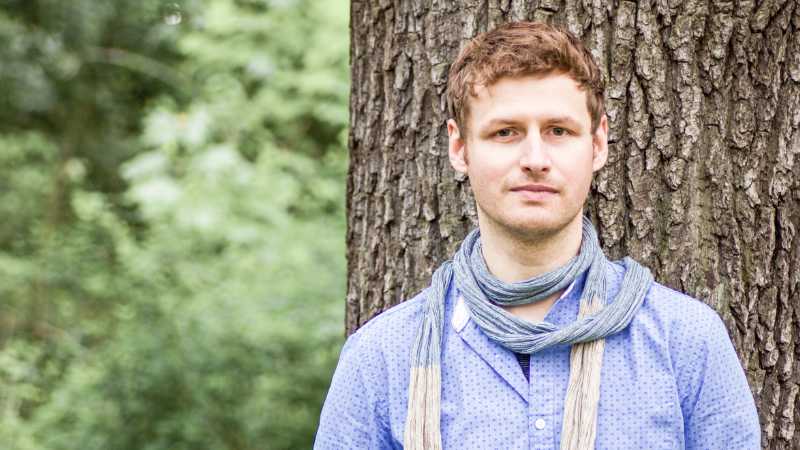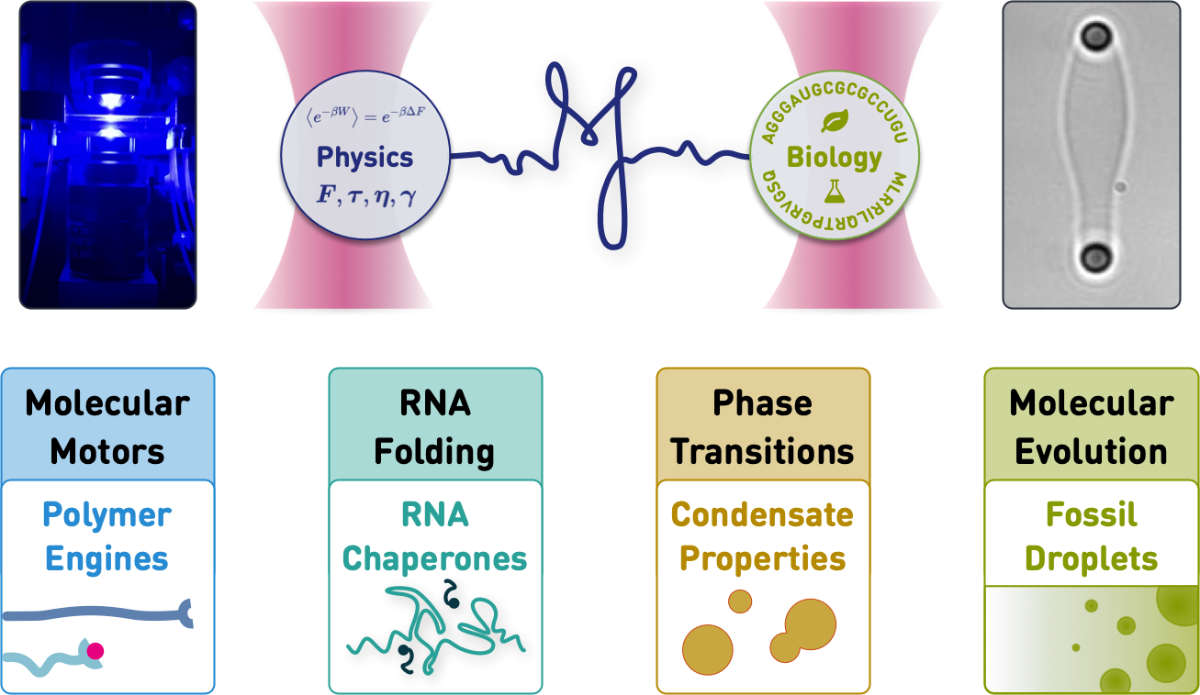Marcus Jahnel Group
Dynamics of Biomolecules

The molecular world, where nothing ever stands still, poses some intriguing challenges to our understanding of living matter. How do molecules robustly self-organize into compartments, transmit signals or generate forces in the omnipresence of thermal fluctuations? How are decisions made reliably on that level? And how can tiny molecular changes lead to significant effects for an organism on different length and time scales?
Our team works at the intersection of molecular cell biology and polymer physics, and we are fascinated by the emergent molecular behavior of Life's building blocks. We see proteins and RNAs as multifaceted actors that readily adopt roles as information carriers, as structural materials, as complex fluids, as molecular thermometers, as choreographers, as timekeepers, soft machines, and sometimes all at once. This fascinating molecular universe offers a rich playground to expand both our understanding of physics and biology.
To investigate the dynamic nature of Life's molecules, we employ a captivating property of light: it can be used to exert and measure minute forces, forces so small that it allows us to study and manipulate individual molecular players with precision. In essence, we use the Physics of Light to study the Physics of Life.

Future Projects and Goals
The ability to manipulate and study individual molecules and functional assemblies in vitro has revolutionized our understanding of the biology and physics of Life's molecules. However, many, many puzzles remain! Come and help us better understand:
- Material properties of biomolecular condensates
How to assess whether a given condensate behaves like a liquid, a gel, or a glass? Using our optical tweezers and microfluidics, we design new workflows to extract material parameters of complex protein-RNA fluids under changing conditions, with a particular interest on active processes. - RNA folding and misfolding in the presence of disordered proteins
How do long regulatory RNAs fold in the context of RNA chaperones? We use delicate optical tweezer experiments to unfold a single regulatory RNA and study the effect of RNA-binding proteins undergoing phase transitions. - Fossil droplets and the evolution of biomolecular condensates
When did proteins and RNAs start to condense, and how do the material properties of condensates vary among organisms? With a combination of bioinformatics and biophysical experiments, we explore how biomolecular condensates changed over time. - Active tethers of EEA1 & RAB5
How do long coiled-coil proteins and small GTPases generate forces? We use optical tweezers, microfluidics, and polymer theory to analyze the dynamic aspects of this new molecular motor system.
Methodological and Technical Expertise
Our toolbox to tackle some molecular mysteries:
- Measuring or applying minute forces using light alone (optical tweezers)
- Performing delicate single-molecule experiments with proteins and nucleic acids
- Combining image processing, data science (Python & R), and simulations (Julia)
- Applying concepts from polymer and soft matter physics in back-of-the-envelope models